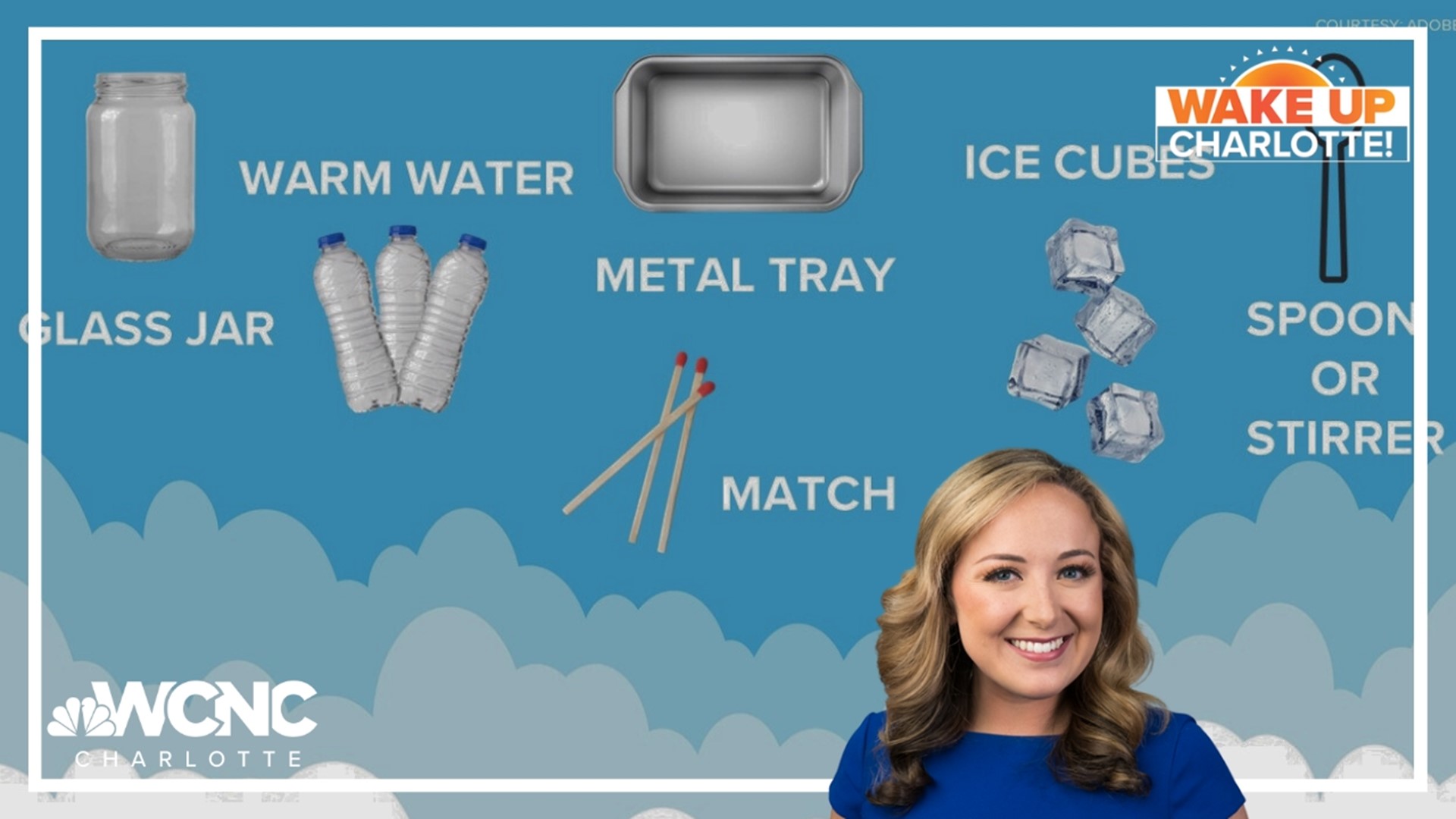CHARLOTTE, N.C. — *Note: Children should not perform this experiment without adult permission and supervision.
What you need:
- Glass jar
- Warm water
- Metal tray
- Ice
- Spoon/stirrer
- Match
Pro tip: Put the ice on your metal tray before beginning.
Step 1) Pour your warm water into your glass jar. There should be around two inches of warm water in the jar so this will depend on the size of the jar.
Step 2) Stir the warm water with a spoon or stirrer. As the stirring occurs, warm water will evaporate and water vapor will begin to rise. You won’t be able to see this change because of course, it’s invisible. :)
Step 3) Ask an adult or have an adult help you light a match, blow it out, and quickly toss into the jar. These smoke particles will hang in the air allowing the water vapor to attach themselves.
Step 4) Immediately place the metal tray over the jar. This should have the ice on it but if you forget, you can add the ice after. The quicker you do this, the quicker the water vapor will cool!
For the latest weather alerts, download the WCNC Charlotte mobile app and enable push notifications.
What happens?
A cloud will appear in the jar because the water vapor already present will mix with the air and smoke particles.
When you mix the warm water, the water vapor rises and instantly cools when it comes in contact with the tray with ice. This is a process called evaporation.
As the water vapor cools, it condenses into very tiny water droplets onto the smoke particles. This is called condensation.
When this happens enough times or there’s enough condensation, we start to see the cloud…just like in real life!
How does this happen in ‘real life’?
This exact process happens naturally in our environment, because in order for clouds to form, the water vapor droplets have to attach themselves to some particle already present. These are referred to as cloud condensation nuclei, and are often smoke, dust, salt, or pollution particles.
This is a very important part of the water cycle.
Contact Brittany Van Voorhees at bvanvoorhe@wcnc.com and follow her on Facebook, X and Instagram.
WCNC Charlotte’s Weather IQ YouTube channel gives detailed explainers from the WCNC Charlotte meteorologists to help you learn and understand weather, climate and science. Watch previous stories where you can raise your Weather IQ in the YouTube playlist below and subscribe to get updated when new videos are uploaded.

